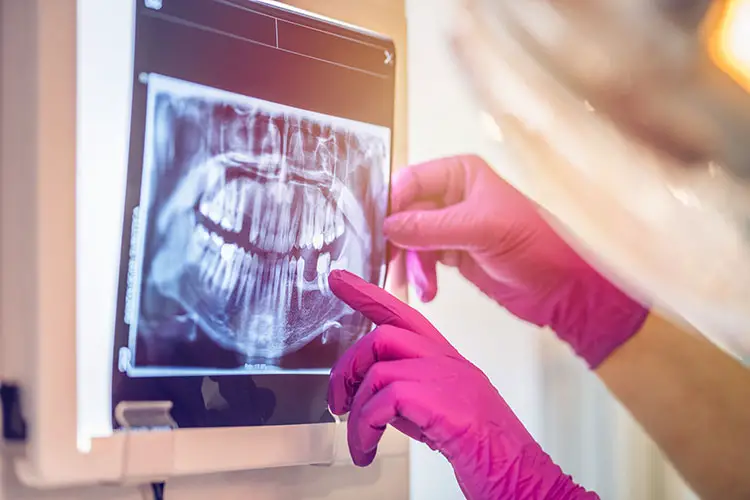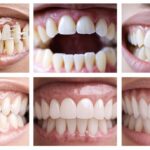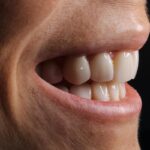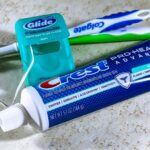Countless people suffer from an irregular bite, a condition known as malocclusion. In fact, the dhealth Dental team in Australia explains that this is one of the most common oral health issues that people face today.
One of the most popular options for correcting malocclusion is jaw surgery. Like any procedure, jaw surgery has its own set of pros and cons. Some may be unsettled when the orthodontist breaks the news that they will need to “break” the jaw. Others will simply be happy with the results.
Either way, it is important to consider the benefits and drawbacks of jaw surgery. We will do that here, and also explore some potential alternatives for bite correction treatment.
What Jaw Surgery Looks Like
The Mayo Clinic team has an excellent description of what jaw surgery looks like: “The surgeon makes cuts in the jawbones and moves them into the correct position. Once your jaw movement is completed, tiny bone plates, screws, wires, and rubber bands may be used to secure the bones into their new position.”
The screws become integrated into the actual bone structure over time. In the event that extra bone needs to be added to the jaw, the surgeon will usually transfer it from other areas of the body like the leg, hip or rib.
“Surgery can usually be performed inside your mouth, so no facial scars show on your chin, jaw or around the mouth,” the Mayo Clinic team adds. “However, sometimes small incisions may be required outside your mouth.”

The Pros and Cons of Jaw Surgery
The primary advantage of jaw surgery is it tends to be comparatively cost-effective.
Carol Wiley notes at Colgate that for patients in the United States without health insurance, it usually costs anywhere from $20,000 to $40,000. However, that price can be much lower for those who are covered by health insurance.
Beyond this, there are some other major benefits that the DocDoc team covers, including:
- Patients experience less difficulty chewing food.
- Patients experience less wear on the teeth.
- Dental structures are preserved.
They also point out that individuals who suffer from TMJ disorders experience relief from symptoms such as jaw pain and locking of the joint.
Drawbacks and Complications of Jaw Surgery
In contrast, the major drawbacks of jaw surgery have to do with the lengthy recovery process and the risks associated with the procedure.
Although it’s a relatively safe procedure, Jeffrey C. Posnick, DMD, MD, explains that jaw surgery does come with a variety of risks, some of which include:
- Extensive bleeding
- Sensory loss
- Wound-healing complications (this is higher in patients who use tobacco, have diabetes or are in poor nutritional health)
- Nerve damage
- Complications with the breathing passages
Dr. Young-Kyun Kim backs up many of these potential complications, adding that relapse to the original jaw position is also possible.
Queen Victoria Hospital also writes that patients face the threat of infection, which affects plates underneath the gum and lip numbness, which can be permanent in some patients.
Jaw Surgery Recovery Time
The other major drawback to jaw surgery is the lengthy impact of the procedure. The time that it takes to fully recuperate and heal from a jaw surgery is quite lengthy.
According to the Mayo Clinic, the initial jaw healing takes roughly six weeks, but complete healing can take up to 12 weeks. Most adults spend the first two to four days after the surgery in the hospital.

What Patients Can Expect Before, During and After Surgery
In terms of specific events, the Double Jaw Surgery team outlines what you can expect during the recovery process.
The day of the surgery:
- You won’t be able to talk.
- You will have to drink through a syringe. Solid foods aren’t an option.
- You will be prone to drooling.
- You will experience a considerable amount of pain.
- Sleeping will be difficult.
During the next few days, your mouth will swell. This peaks around day three. After about a week, mouth movement and talking become easier. At around two weeks, the bulk of the swelling will subside, and you should begin sleeping through the night without issue.
Four weeks in, and your speech should be nearly back to normal, and things will generally keep improving after that. At the three-month mark, any side effects should be virtually unnoticeable. At this point, you can eat, breath and smile just as you always would. L
Limitations of Jaw Surgery for Bite Correction
Note that jaw surgery is not a fix-all for alignment and bite correction. Many patients are required to wear braces before and after jaw surgery to assist in the alignment process. In addition to wearing braces for 12 to 18 months prior to the procedure, some patients will be required to wear them for a significant period afterward.
The CostHelper Health team reports that two to three years of braces is the norm. The average cost is $1,500–$10,000 for traditional metal braces and $2,000–$8,500 for those with tooth-colored brackets. This is an added cost that anyone considering jaw surgery should be aware of.
Alternative Bite Correction Options
Until recently, the invasive jaw surgeries, or orthognathic surgeries, described here were usually the way bite problems were treated. As we’ve seen, however, those procedures can be painful and involve substantial recovery time. That’s a welcome trade-off for some patients, though. In some cases, patients choose jaw surgery because their jaw pain or overbite has become unbearable from day-to-day.
Fortunately, bite correction has come a long way over the years, and now there are other ways to fix malocclusion without jaw surgery. As John Healy at Dental South P.A. writes, “Non-surgical bite correction eliminates strain on your teeth, jaws, and muscles” much in the same way as jaw surgery.
Some bite correction options include:
- Expanders
- Braces
- Bonding and implants
- Veneers
- Non-Surgical VENLAY® Bite Correction
If you have an irregular bite, you could look into one of these nonsurgical approaches to correct it. Each can deliver satisfactory results for patients, depending on those patients’ individual needs.
If bite correction is something you’re considering, it’s important to look at your options from all angles, including the length of recovery time, potential complications and cost. In an upcoming post, we will explore the pros and cons of the available alternatives to jaw surgery.
Images by: Dani Vivanco, Drop the Label Movement, Taylor Grote









